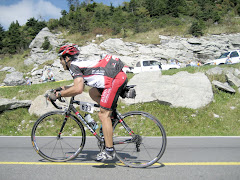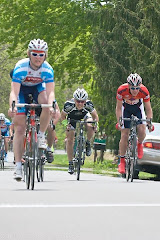It’s been a while since I have blogged. Getting sick stacked on top of all the other responsibilities will leave you with no free time every now and then. Oh well, c’est la vie.
So, do you want to hear (er, read) about my brush with Tour de France fame???!!! If you’re a tech/training wiener like me, then you know who Dr. Allen Lim is. If not, he is an expert cycling physiologist/power guru and works for the Garmin-Chipotle team. He is currently traveling with the team at the Tour de France and among other duties with the team, he is maintaining a Q&A forum on the Saris (PowerTap) website. Well, just for grins, I sent in a question to the good doctor last week. I guess I kind of stumped him as he was not able to provide a definitive answer. Furthermore, he consulted with Danny Pate of Team Garmin to get his response to the question – that’s right, Danny Pate who was 3rd on stage 15 Sunday after a monster breakaway effort. So in a way, it’s sort of like I was able to ask my question to a TdF rider. I know it’s a stretch, but that’s probably as close as I’ll get to any association with the Tour.
Here's my question and Dr. Lim’s response.
Dear Dr. Lim-
I am a loyal PT owner and user. When I do interval sessions, I find it “easier” to maintain target wattage when going uphill as opposed to trying to maintain the same target when on the flats (“easier” really just means “less painful” in this context; believe me, it ain't easy). Why is this true, and is this just my perception, or is this generally true for the majority of riders (i.e. do some believe the opposite to be true)? Is it because going uphill, a rider is fighting all of the different components of resistance – wind, rolling resistance, and gravity – while when on the flats, only two components come into play? Thanks for your time and consideration.
Sincerely,
Dan
Columbus, OH
Dan,
I would agree that your experience on the hills versus the flats are exactly what other cyclists experience. The difference may be due to a number of factors, though I don’t have any definitive answers.
Anyway, one thought is that the on a grade your angle of attack on the cranks is different than on level ground, creating distinct torque profiles on the level versus a climb. On a climb, the impulse or area that peak torque is applied can range from 1 o’clock to about 5 o’clock. In contrast, the area of peak torque on the level is much smaller, ranging from about 2 to 4 o’clock.
Another issue may simply be the cadence or the combination of cadence and torque profile.
Resistance may also be a factor as the external resistance to motion is much more consistent than it is on the flats. At high speeds, small pauses in power production don’t result in noticeable changes in speed as the momentum is so high. But at low speeds, especially on a climb, small pauses in power production result in very significant changes in speed. That is, if you stop pedaling on a steep hill you’re screwed, but if you pause for a few seconds here and there on the flats, you’re not. As a result, the average power on the flats, is always much lower just because of those micro seconds of “float” time.
Finally, one issue may simply be specificity. What I’ve seen is that my guys like climbing. They like doing intervals on hills. But if we make them train a lot on the flats, the power differential between the flats and hills begins to drop, though they tend to always still do better in the hills.
Anyway, I don’t have any good answers, and I just asked Danny Pate if he had any ideas, and we just spent the last 20 minutes talking about it, and now we’re both confused. So just make sure you don’t neglect doing intervals on both the flats and the hills, and if you figure it out let us know.
Last thought....if you are holding on the bars and using your arms like a cable that help to hold your hips down during the pedal stroke, the issue may simply be that you are able to put down more torque due to the body position while climbing and the support from your upper body. The Italians once did the Worlds TTT with a hip strap that had a wire on the end of it that they tied down to the top tube. As they went hard, they would tighten the strap down and could push against it during the down stroke. They devastated the competition on a relatively flat course. The UCI later banned the hip/wire strap device.
Allen
Subscribe to:
Post Comments (Atom)



No comments:
Post a Comment